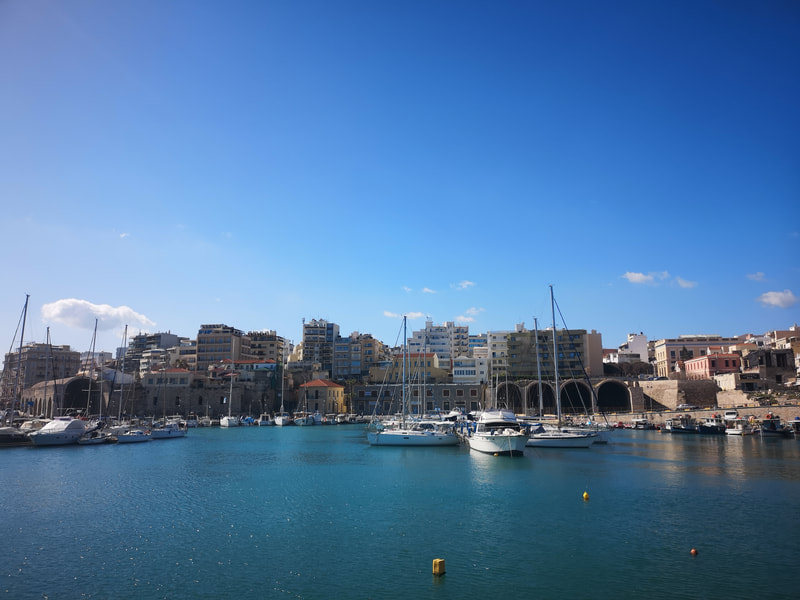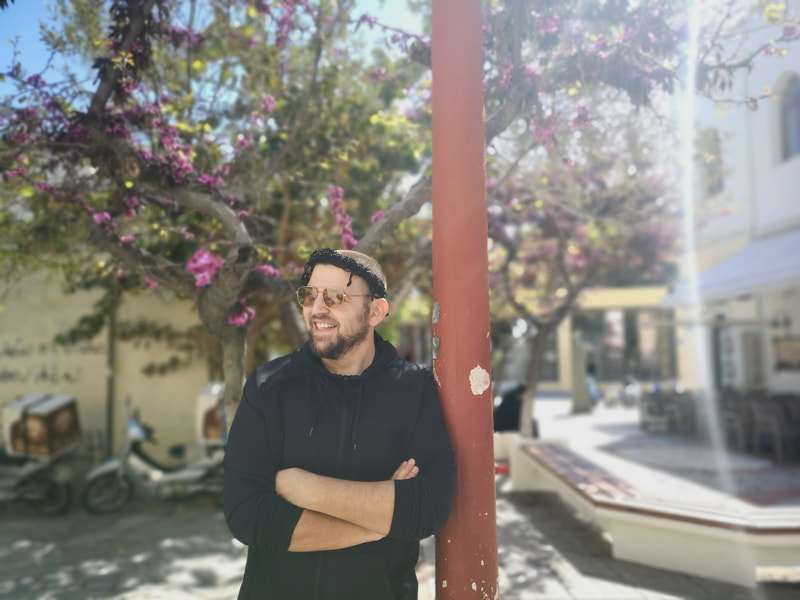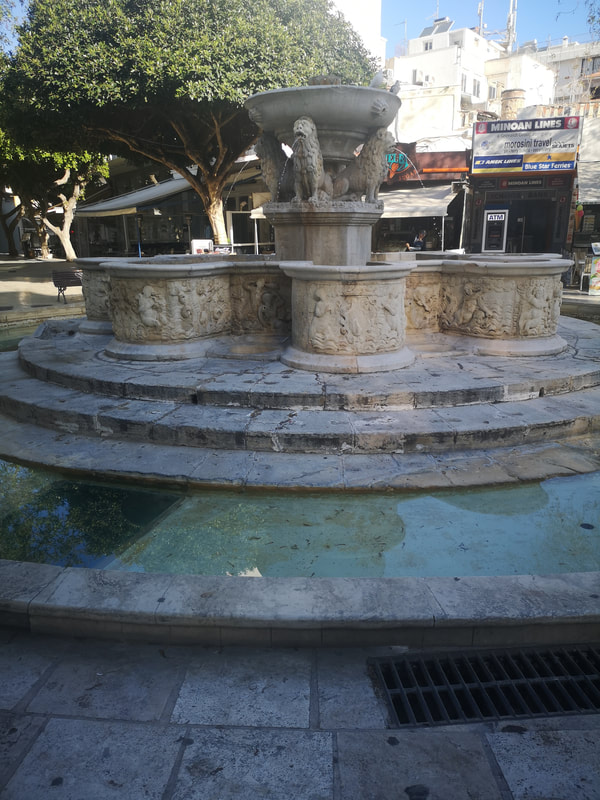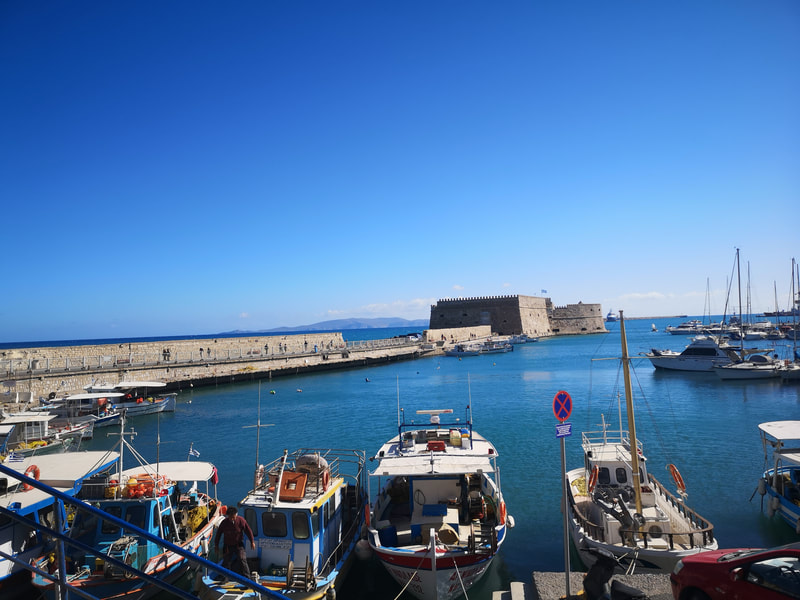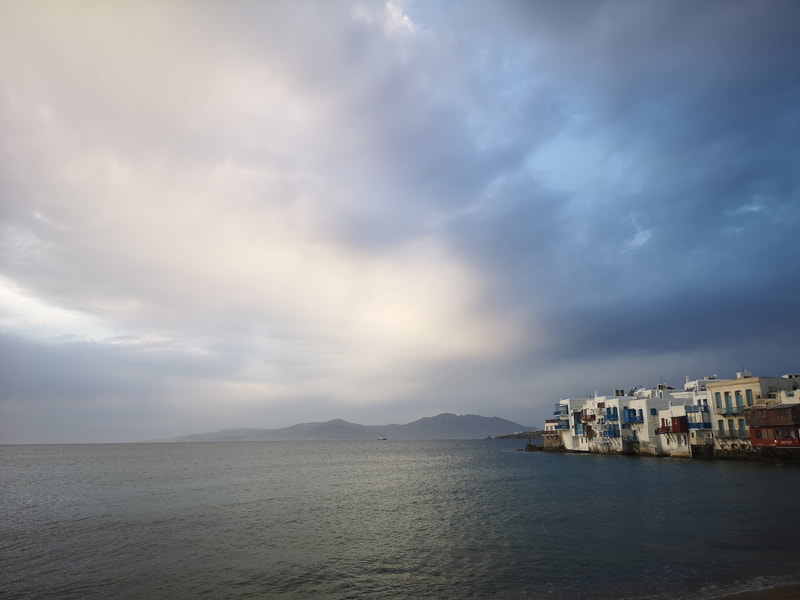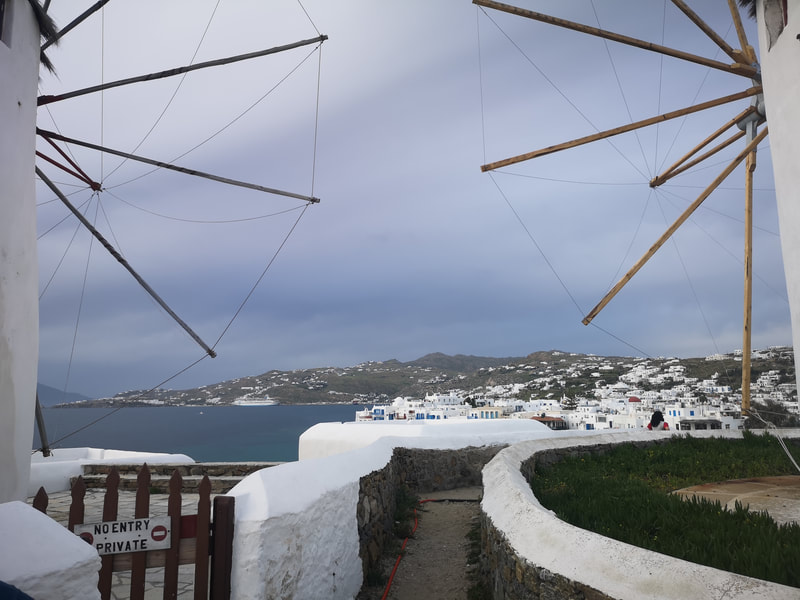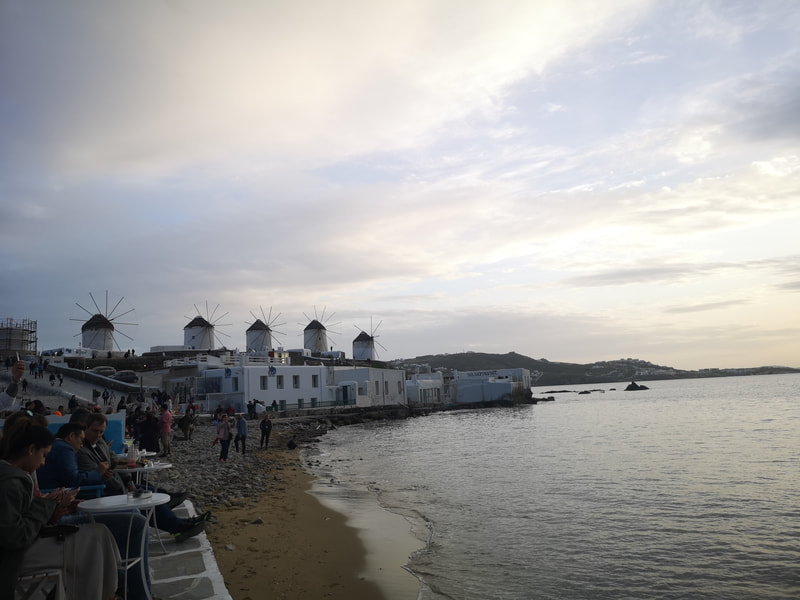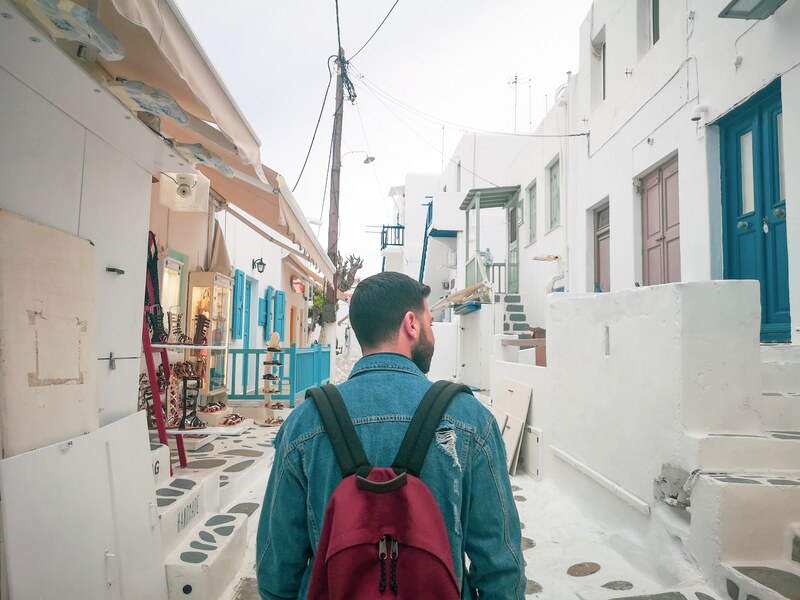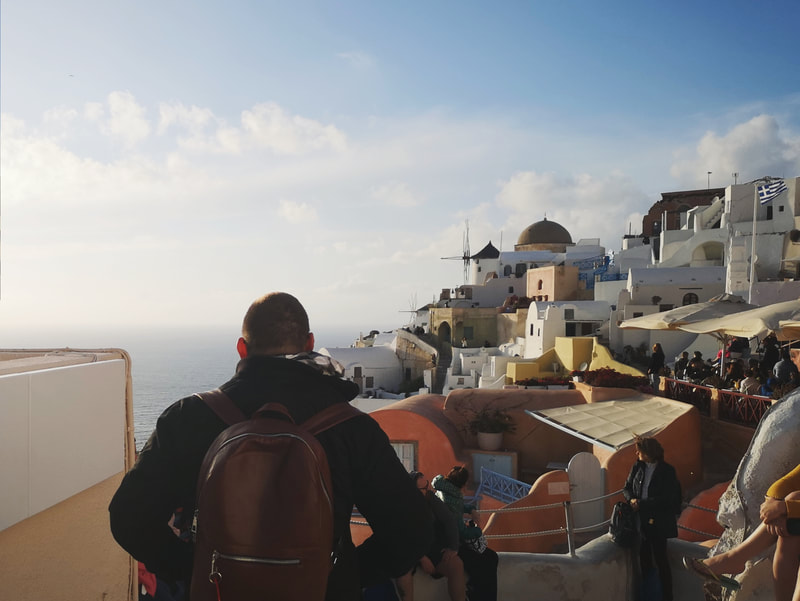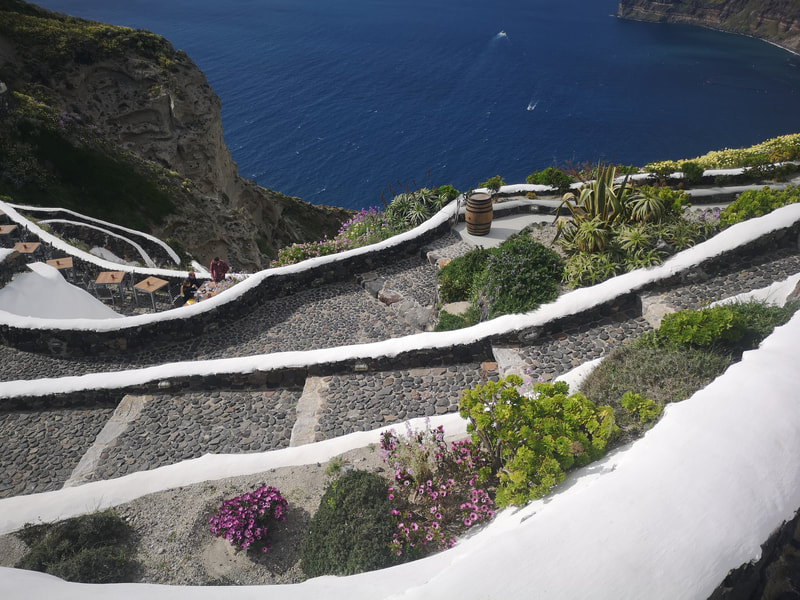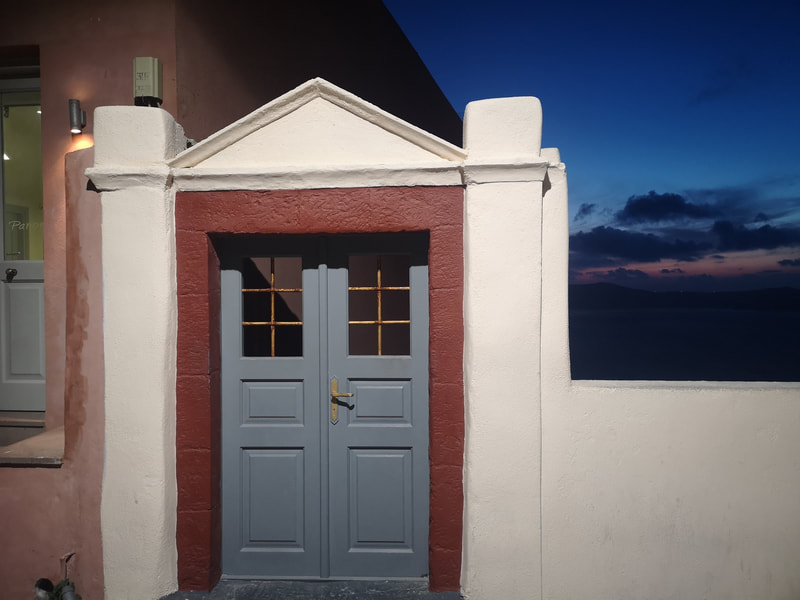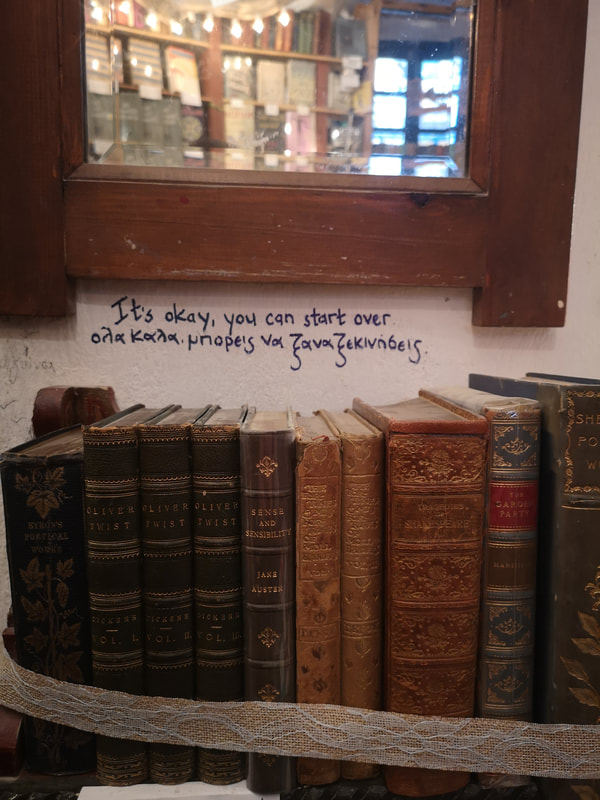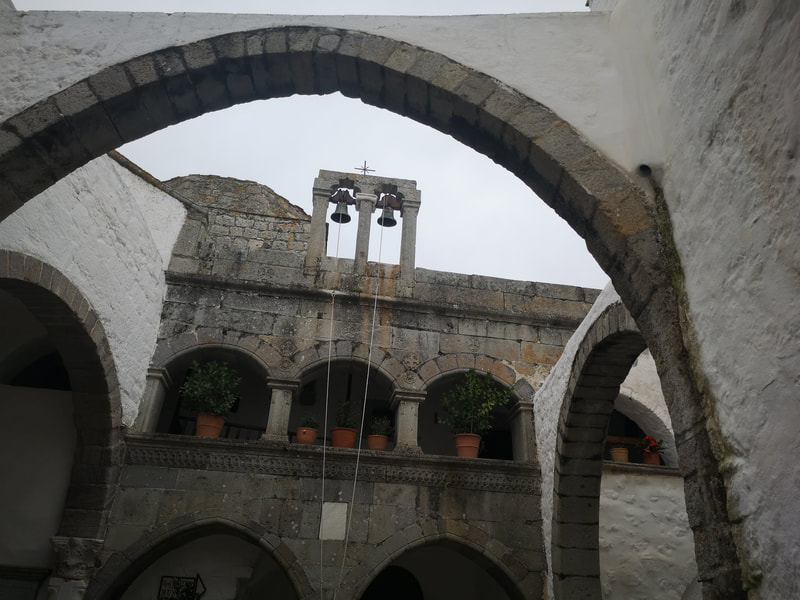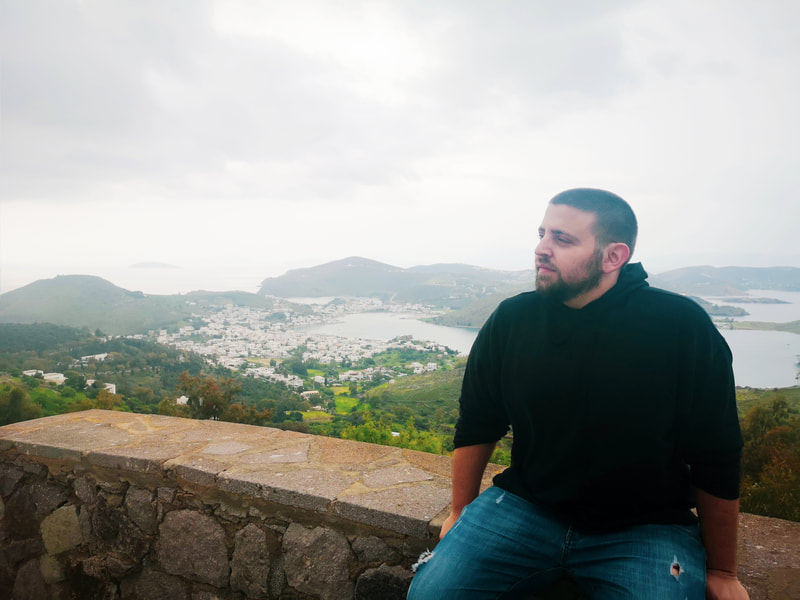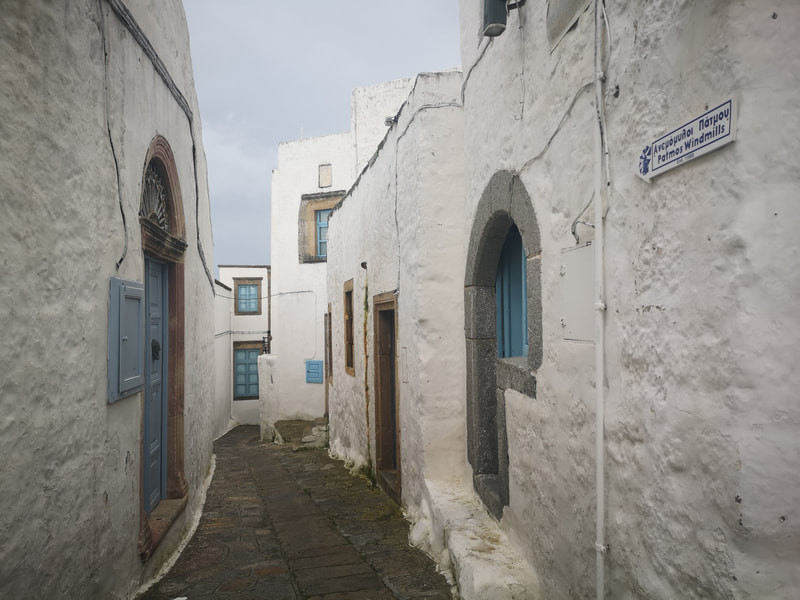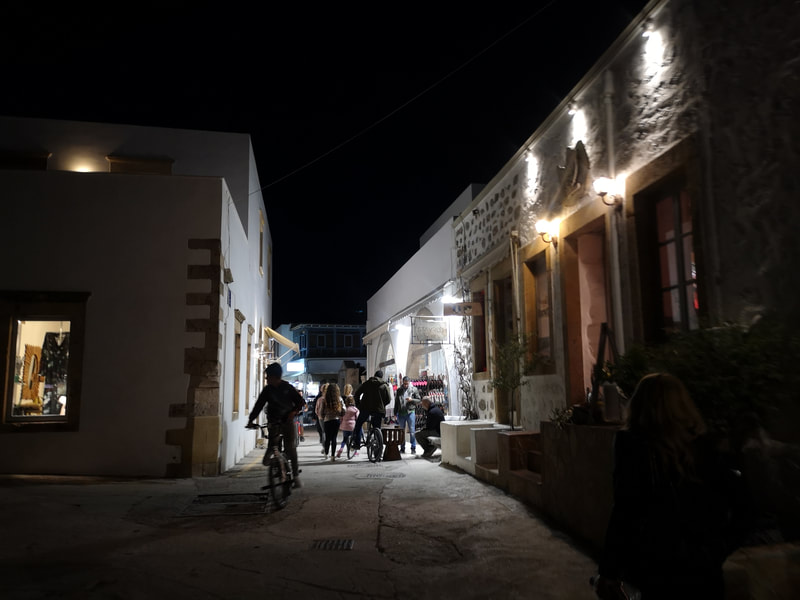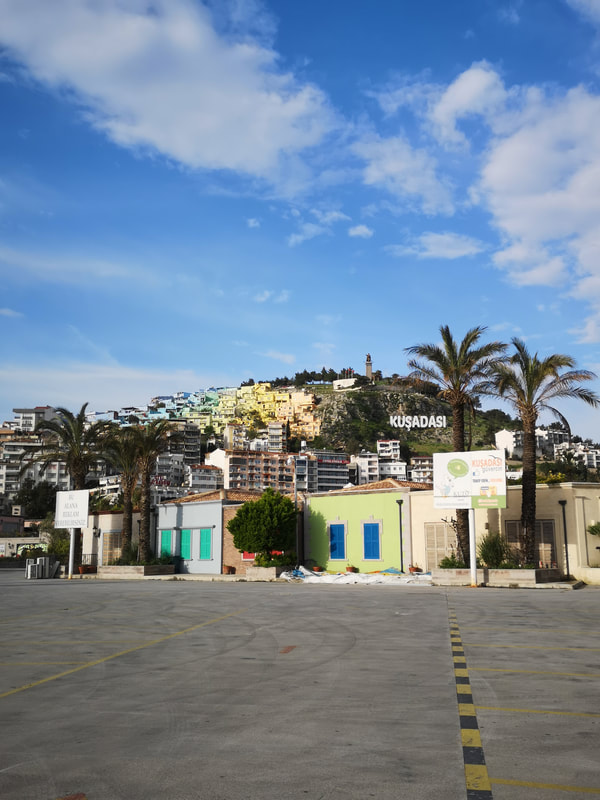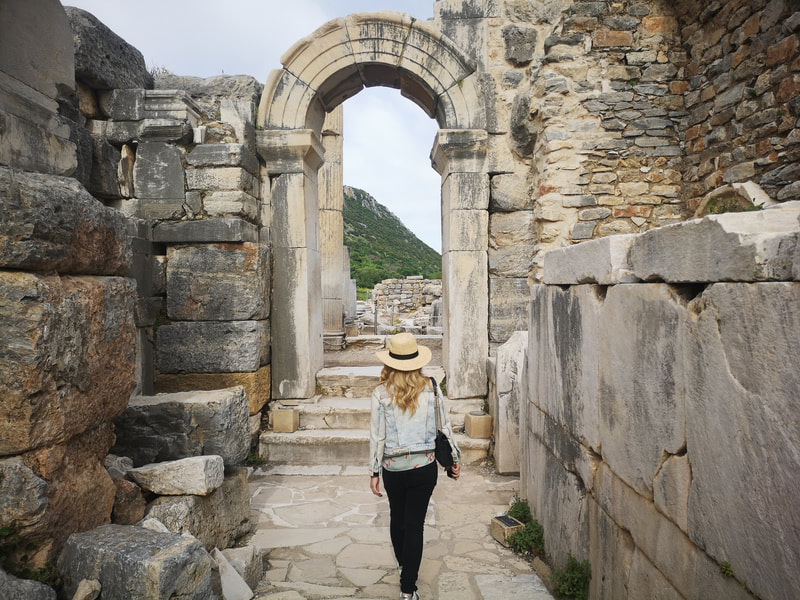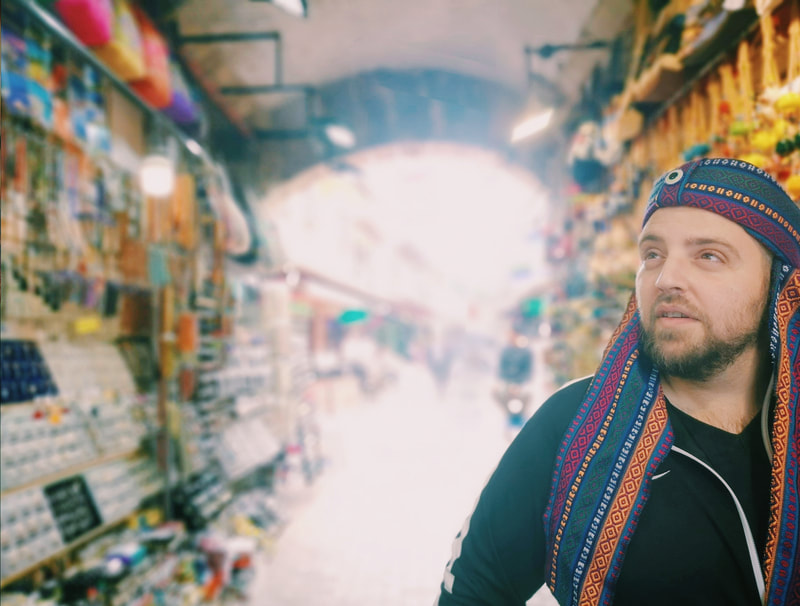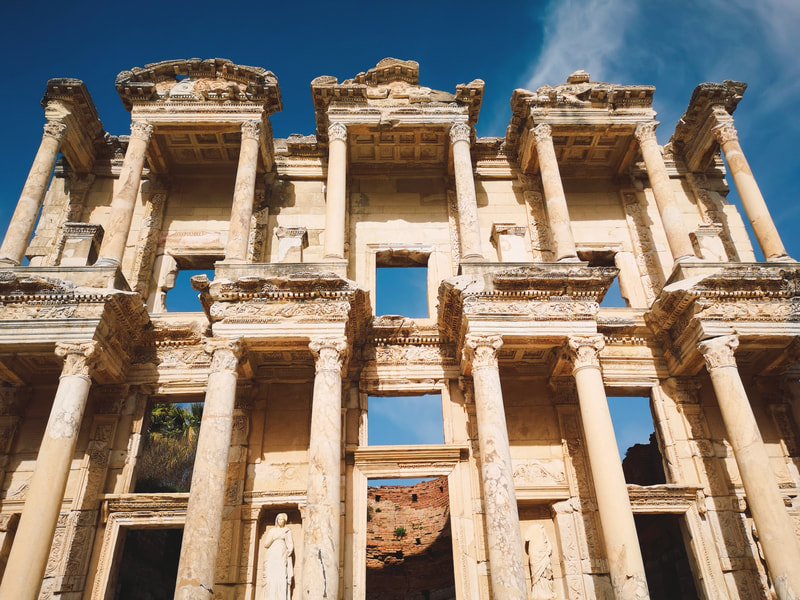I was lucky enough to be selected for a press trip around the Aegean with the amazing Celestyal Cruises and the stunning Olympia. Not just that, but all the destinations were new to me, so double win. The cruise ship was enormous and had everything you might need and more, from fun shows for entertainment at night, beautiful restaurants and pool bars and comfortable cabins. Also delicious food, which is always a plus.
HERAKLION
We disembarked in Heraklion for a few hours on a Sunday and on our first stop we couldn't not try one of the most famous spots in the city, Phyllosophies. It's right there in the central Lions Square and its basically where everyone is on a Sunday. Very tasty bougatsa, and that is one thing the café is known for.
The Lions fountain, formerly known as Morozini, was watered by the spring of Karidaki and the watered traveled about 15km in a gigantic aqueduct, one of the longest in the then world. The fountain took its former name name after the Captain Francesco Morozini. It was decorated with scenes from the Greek mythology, as well as Venetian coat of arms.
Other than that, the port is great for a walk. Boats and baskets with fish, the endless blue of the sea, the Rocca a Mare Fortress on the background, make for a beautiful scene. The Rocca a Mare Fortress was built by the Republic of Venice in the early 16th century under the name of Castello di Candia a Mare and is now open as a host for art exhibitions and cultural activities. And of course, I bought a sariki, a traditional headwear, that I am wearing wrong on the main pic all the way up. I also found a few lovely stores, including the amazing Mayaba, that has handcrafted souvenirs and novelties.
HERAKLION
We disembarked in Heraklion for a few hours on a Sunday and on our first stop we couldn't not try one of the most famous spots in the city, Phyllosophies. It's right there in the central Lions Square and its basically where everyone is on a Sunday. Very tasty bougatsa, and that is one thing the café is known for.
The Lions fountain, formerly known as Morozini, was watered by the spring of Karidaki and the watered traveled about 15km in a gigantic aqueduct, one of the longest in the then world. The fountain took its former name name after the Captain Francesco Morozini. It was decorated with scenes from the Greek mythology, as well as Venetian coat of arms.
Other than that, the port is great for a walk. Boats and baskets with fish, the endless blue of the sea, the Rocca a Mare Fortress on the background, make for a beautiful scene. The Rocca a Mare Fortress was built by the Republic of Venice in the early 16th century under the name of Castello di Candia a Mare and is now open as a host for art exhibitions and cultural activities. And of course, I bought a sariki, a traditional headwear, that I am wearing wrong on the main pic all the way up. I also found a few lovely stores, including the amazing Mayaba, that has handcrafted souvenirs and novelties.
MYKONOS
The cosmopolitan island of Mykonos is big every summer with crowds arriving from every corner of the world, so if you’re not a big fan of big crowds you can avoid them with some preparation.
One of the most Instagrammable spots in the island is definitely the windmills. There are currently 16 of them in Mykonos, seven of which are in Chora and they were at first used to mill wheat.. Most of them were built by the Venetians during the 16th century, but their construction continued into the early 20th century. Their use gradually declined until they ceased production in the middle of the 20th century. They are all round and white, with a pointed roof and tiny windows.
Then there is Little Venice. Fishing houses built on the waterfront, balconies that oversee the sea, taverns and cafes right next to the sea, all these are why the spot was nicknamed ''Little Venice''. It's one of the most photographed spots of the island and once you see it live, you instantly know why. It's beautiful and different than the whole island architecture. Enjoy a drink at Little Venice (though be prepared for some expensive cocktails). The view is beautiful and the vibes are so nice.
The cosmopolitan island of Mykonos is big every summer with crowds arriving from every corner of the world, so if you’re not a big fan of big crowds you can avoid them with some preparation.
One of the most Instagrammable spots in the island is definitely the windmills. There are currently 16 of them in Mykonos, seven of which are in Chora and they were at first used to mill wheat.. Most of them were built by the Venetians during the 16th century, but their construction continued into the early 20th century. Their use gradually declined until they ceased production in the middle of the 20th century. They are all round and white, with a pointed roof and tiny windows.
Then there is Little Venice. Fishing houses built on the waterfront, balconies that oversee the sea, taverns and cafes right next to the sea, all these are why the spot was nicknamed ''Little Venice''. It's one of the most photographed spots of the island and once you see it live, you instantly know why. It's beautiful and different than the whole island architecture. Enjoy a drink at Little Venice (though be prepared for some expensive cocktails). The view is beautiful and the vibes are so nice.
SANTORINI
No matter how many nice things you hear about Santorini, they cannot truly describe the beauty of the island. You need a boat to transfer you from the cruise ship to the port and on the way you see mountains. Santorini was the site of one of the largest volcanic eruptions in recorded history: the Minoan eruption which occurred about 3,600 years ago. The eruption left a large caldera surrounded by volcanic ash deposits hundreds of meters deep. As the bus took us from the port to our first stop, the scenery was out of this world. Green, mountains, valleys, you could be in some parts of Ireland, or New Zealand, but this one is Greek! Everywhere you looked there was green, and white houses here and there.
Wine tasting at Venetsanos Winery, and we sat at the terrace, overseeing the said mountains and the sea. Two delicious whites and a red one (tasty, although I'm a fan of white wines) served with a big platter of cheese and local goods. Wine drinking at that terrace is an experience everyone should live once in their lifetime. The second one is the sunset from Oia, although you must find your spot early on because once the sun starts setting there are hundreds of people everywhere enjoying the view.
Highlight was also finding Atlantis Books. In 2016, it topped the list of ''World's Most Interesting Bookstores'' in National Geographic’s ''Destinations of a Lifetime'' and once you visit it, you understand why. It's basically a hobbit house. Round, high ceiling with hundreds of books all around. I completely forgot it existed in Oia, but I'm so happy I got to visit it before we left.
Last stop was the village of Fira. It was night so most shops were closed but the view, the air and the vibes were enough for us to enjoy our walk towards the cable car that transferred us to the port.
No matter how many nice things you hear about Santorini, they cannot truly describe the beauty of the island. You need a boat to transfer you from the cruise ship to the port and on the way you see mountains. Santorini was the site of one of the largest volcanic eruptions in recorded history: the Minoan eruption which occurred about 3,600 years ago. The eruption left a large caldera surrounded by volcanic ash deposits hundreds of meters deep. As the bus took us from the port to our first stop, the scenery was out of this world. Green, mountains, valleys, you could be in some parts of Ireland, or New Zealand, but this one is Greek! Everywhere you looked there was green, and white houses here and there.
Wine tasting at Venetsanos Winery, and we sat at the terrace, overseeing the said mountains and the sea. Two delicious whites and a red one (tasty, although I'm a fan of white wines) served with a big platter of cheese and local goods. Wine drinking at that terrace is an experience everyone should live once in their lifetime. The second one is the sunset from Oia, although you must find your spot early on because once the sun starts setting there are hundreds of people everywhere enjoying the view.
Highlight was also finding Atlantis Books. In 2016, it topped the list of ''World's Most Interesting Bookstores'' in National Geographic’s ''Destinations of a Lifetime'' and once you visit it, you understand why. It's basically a hobbit house. Round, high ceiling with hundreds of books all around. I completely forgot it existed in Oia, but I'm so happy I got to visit it before we left.
Last stop was the village of Fira. It was night so most shops were closed but the view, the air and the vibes were enough for us to enjoy our walk towards the cable car that transferred us to the port.
PATMOS
Otherwise known as The Island of the Apocalypse. The first thing you realize when you step foot at the port is how calm and tranquil the island is. A walk around the central roads makes you feel so rested, with tourists but not crowds.
We used a bus to get close to the monastery and we walked for the remaining road. In 1092, the greater part of the monastery was completed by the soldier and priest John Christodoulos who pretty much turned it into a fort, at least on the exterior, because of the threats of piracy.
When you walk inside the huge gate there is a small hallway that lead to a garden with arches and a fat cat who apparently is famous around the world. Inside the church you notice the impeccable wood carvings around the pictures that present flowers, as well as scenes from the Bible. UNESCO has declared the Monastery of St. John the Theologian a World Heritage site.
Then we visited the grotto, believed to be the place where John received his visions that he recorded in the Book of Revelation and you can actually see the details inside the caves; where he lied down, where Christ appeared and where the rocks broke in three to symbolize the Holy Trinity. In 1999, UNESCO declared the cave a joint World Heritage Site.
Otherwise known as The Island of the Apocalypse. The first thing you realize when you step foot at the port is how calm and tranquil the island is. A walk around the central roads makes you feel so rested, with tourists but not crowds.
We used a bus to get close to the monastery and we walked for the remaining road. In 1092, the greater part of the monastery was completed by the soldier and priest John Christodoulos who pretty much turned it into a fort, at least on the exterior, because of the threats of piracy.
When you walk inside the huge gate there is a small hallway that lead to a garden with arches and a fat cat who apparently is famous around the world. Inside the church you notice the impeccable wood carvings around the pictures that present flowers, as well as scenes from the Bible. UNESCO has declared the Monastery of St. John the Theologian a World Heritage site.
Then we visited the grotto, believed to be the place where John received his visions that he recorded in the Book of Revelation and you can actually see the details inside the caves; where he lied down, where Christ appeared and where the rocks broke in three to symbolize the Holy Trinity. In 1999, UNESCO declared the cave a joint World Heritage Site.
KUSADASI
The name Kuşadası comes from the Turkish words kuş (bird) and ada (island) because the shape of the island, when seen from the sea, resembles the head of a bird. It was known as Ephesus Neopolis during the Byzantine era. We visited the resort town in order to get to Ephesus, which is three kilometres southwest of present-day Selçuk in İzmir Province, Turkey.
You see ruins of baths and the amphitheater, and even a stone carving of Nike. Everywhere you look, you see the remains of Greek history and its very obvious at every stone that there is around. The city was destroyed by the Goths in 263, and although rebuilt, it was partially destroyed again by an earthquake in AD 614. Ephesus is also believed to be the city of the Seven Sleepers, who are considered saints by Catholics and Orthodox Christians and whose story is also mentioned in the Qur'an.
The theater is believed to be the largest in the ancient world with a seating capacity of 25 thousand. In Ephesus there were, also, two agoras, one for commercial and one for state business and had many bath complexes built at various times while the city was under Roman rule.
Must see: The library of Celsus. It was originally built circa 125 AD in memory of Tiberius Julius Celsus Polemaeanus, an Ancient Greek, who served as governor of Roman Asia in the Roman Empire. Celsus paid for the construction of the library with his own money and is buried in a sarcophagus beneath it. The library once held nearly 12,000 scrolls and is facing east so as to make most use of the day light. Interesting fact, the facade of the library has been reconstructed using its original pieces.
The name Kuşadası comes from the Turkish words kuş (bird) and ada (island) because the shape of the island, when seen from the sea, resembles the head of a bird. It was known as Ephesus Neopolis during the Byzantine era. We visited the resort town in order to get to Ephesus, which is three kilometres southwest of present-day Selçuk in İzmir Province, Turkey.
You see ruins of baths and the amphitheater, and even a stone carving of Nike. Everywhere you look, you see the remains of Greek history and its very obvious at every stone that there is around. The city was destroyed by the Goths in 263, and although rebuilt, it was partially destroyed again by an earthquake in AD 614. Ephesus is also believed to be the city of the Seven Sleepers, who are considered saints by Catholics and Orthodox Christians and whose story is also mentioned in the Qur'an.
The theater is believed to be the largest in the ancient world with a seating capacity of 25 thousand. In Ephesus there were, also, two agoras, one for commercial and one for state business and had many bath complexes built at various times while the city was under Roman rule.
Must see: The library of Celsus. It was originally built circa 125 AD in memory of Tiberius Julius Celsus Polemaeanus, an Ancient Greek, who served as governor of Roman Asia in the Roman Empire. Celsus paid for the construction of the library with his own money and is buried in a sarcophagus beneath it. The library once held nearly 12,000 scrolls and is facing east so as to make most use of the day light. Interesting fact, the facade of the library has been reconstructed using its original pieces.

